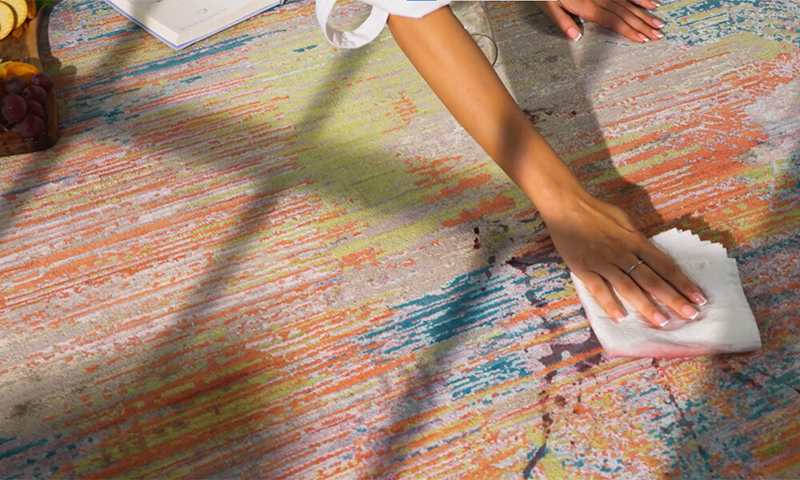
Wool rugs represent one of the finest investments you can make for your home. These premium rugs not only add warmth and elegance to any space but also offer remarkable durability when properly maintained. Unlike synthetic alternatives, quality wool rugs can last for decades, becoming family heirlooms that retain their beauty and value over time.
The secret to maximizing your wool rug’s lifespan lies in understanding its unique properties and implementing consistent care practices. With the right maintenance routine, your wool rug will continue to provide comfort, style, and functionality for years to come. Whether you’ve recently decided to buy premium rugs online or inherited a treasured family piece, this comprehensive guide will help you preserve your investment.
Understanding Your Wool Rug’s Natural Properties
Wool possesses remarkable natural characteristics that make it an ideal material for rugs. The fiber’s inherent resilience allows it to bounce back from compression, maintaining its texture even in high-traffic areas. This natural springiness means your rug will continue looking plush and inviting with proper care.
One of wool’s most valuable properties is its natural stain resistance. The fiber’s structure repels many liquids, giving you precious time to address spills before they set. Additionally, wool naturally resists odors and has antimicrobial properties, making it an excellent choice for homes with pets or children.
However, wool does absorb moisture from the air, which can lead to issues if not managed properly. Understanding this characteristic helps explain why humidity control and proper ventilation are essential for wool rug care. Watch for common wear patterns like matting in high-traffic areas, fiber shedding (especially in new rugs), and potential color bleeding in untreated or poorly dyed wool.
Establishing Your Regular Cleaning Routine
The foundation of wool rug maintenance begins with proper vacuuming. For most households, vacuuming wool rugs once or twice weekly prevents dirt from settling deep into the fibers. However, high-traffic areas may require more frequent attention.
When vacuuming wool rugs, technique matters significantly. Use a vacuum with adjustable suction settings, keeping it on a lower setting to prevent pulling and stretching the fibers. Avoid using the beater bar or rotating brush attachment, as these can damage wool fibers and cause premature wear. Instead, use the suction-only setting or a upholstery attachment.
Vacuum in multiple directions to ensure thorough cleaning, but avoid aggressive back-and-forth motions. For fringed rugs, vacuum parallel to the fringe direction, never perpendicular, to prevent tangling or pulling.
Complement your vacuuming routine by occasionally taking smaller wool rugs outside for gentle shaking. This traditional method effectively removes surface dust and debris that vacuuming might miss. For larger rugs that can’t be moved easily, use a carpet beater on the back side to loosen embedded dirt before vacuuming.
Mastering Immediate Spill Response
Quick action is crucial when spills occur on wool rugs. The key principle is blotting, never rubbing, which can push the liquid deeper into the fibers and potentially cause permanent damage.
Start by removing any solid materials with a spoon or dull knife, working from the outside of the spill toward the center. For liquids, use clean, absorbent towels or paper towels to blot the area. Apply gentle pressure and lift straight up rather than wiping across the surface.
For most spills, clean water is your first line of defense. Blot with a damp cloth, then use dry towels to absorb moisture. For more challenging stains like red wine or coffee, create a mild solution using one part white vinegar to three parts water, or use a small amount of wool-safe detergent mixed with water.
Avoid harsh chemicals, bleach, or strong detergents, which can damage wool fibers or cause color bleeding. When dealing with stubborn stains, work from the outside edges toward the center to prevent spreading, and always test any cleaning solution on an inconspicuous area first.
Deep Cleaning and Professional Services
Even with excellent daily care, wool rugs benefit from periodic deep cleaning. Most experts recommend professional cleaning every 12 to 18 months for regularly used rugs, or more frequently for rugs in high-traffic areas or homes with pets.
When selecting a professional service, choose cleaners experienced specifically with wool rugs. Not all carpet cleaning services understand wool’s unique requirements, and improper cleaning can cause shrinkage, color bleeding, or fiber damage. Ask about their wool cleaning process and whether they use pH-balanced, wool-safe cleaning products.
If you prefer DIY deep cleaning, exercise caution with steam cleaning equipment. Excessive heat and moisture can damage wool, causing shrinkage or distortion. If using a steam cleaner, ensure it has temperature controls and use the lowest effective setting. Always allow the rug to dry completely and quickly to prevent mold or mildew growth.
Protecting Against Sun and Furniture Damage
Wool rugs can fade when exposed to prolonged direct sunlight. Protect your investment by rotating your rugs every few months, ensuring even exposure and preventing uneven fading patterns. Use window treatments during peak sun hours, or consider UV-filtering window films for rooms with valuable rugs.
Heavy furniture can create permanent indentations in wool rugs. Use furniture pads or coasters under chair legs, table legs, and other heavy items. Move furniture occasionally to prevent long-term compression marks, and use furniture sliders when repositioning heavy pieces across your rug.
For persistent indentations, try placing ice cubes on the compressed areas. As the ice melts and the wool absorbs moisture, the fibers often naturally spring back to their original height. Gently brush the area with your fingers or a soft brush once dry.
Safe Storage Practices
When storing wool rugs for extended periods, proper preparation prevents damage from insects, moisture, and crushing. Begin by thoroughly cleaning the rug and ensuring it’s completely dry before storage.
Roll wool rugs rather than folding them when possible. Folding creates permanent creases that may be impossible to remove. If you must fold a rug, pad the fold lines with acid-free tissue paper and refold in different places periodically if storage is long-term.
Protect stored wool rugs from moths and other insects using natural deterrents like cedar blocks or lavender sachets. Avoid mothballs, which can leave permanent odors. Store rugs in a climate-controlled environment with stable temperature and humidity levels, away from direct contact with concrete floors or walls.
Eco-Friendly Maintenance Approaches
Sustainable wool rug care benefits both your home environment and the planet. Natural cleaning solutions often work as effectively as commercial products without introducing harsh chemicals into your living space.
White vinegar mixed with water creates an excellent natural cleaner for most stains. Baking soda can neutralize odors – simply sprinkle it on the rug, let it sit for several hours, then vacuum thoroughly. For deep cleaning, consider soap made from natural ingredients rather than synthetic detergents.
Reduce water usage by spot-cleaning only affected areas rather than cleaning entire rugs unnecessarily. When your wool rug eventually reaches the end of its useful life, explore recycling options or repurposing opportunities rather than sending it to a landfill.
Choosing Quality for Easier Maintenance
When you buy rugs and carpet online, investing in premium quality makes long-term maintenance significantly easier. High-quality wool rugs from reputable sources like The Ambiente feature superior construction and materials that resist wear and respond better to cleaning.
Premium rugs typically use better dyeing processes, reducing the risk of color bleeding during cleaning. The construction quality also means these rugs maintain their shape and appearance longer, requiring less frequent professional maintenance. When you buy premium rugs online, you’re investing in pieces designed to age gracefully with proper care.
Quality wool rugs also tend to shed less after the initial settling period, reducing the frequency of intensive vacuuming required. The investment in premium materials and construction pays dividends in reduced maintenance time and costs over the rug’s lifetime.
Maintaining Beauty for Generations
Proper wool rug care combines consistent daily habits with periodic deeper maintenance. By understanding wool’s natural properties and responding appropriately to its needs, you can enjoy your rugs’ beauty and comfort for decades.
Remember that wool rug maintenance is an investment in your home’s comfort and value. The time spent on regular care prevents costly damage and extends your rug’s useful life significantly. Whether you buy carpet for daily use or premium rugs as statement pieces, consistent care ensures your investment continues paying dividends in comfort, style, and lasting value.
Start implementing these care practices today, and your wool rugs will reward you with years of enduring beauty and comfort. With proper attention, these natural fiber treasures become not just floor coverings, but lasting elements of your home’s story.



